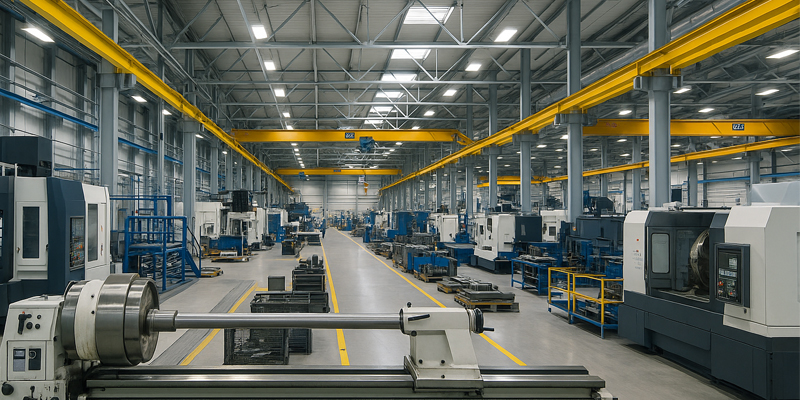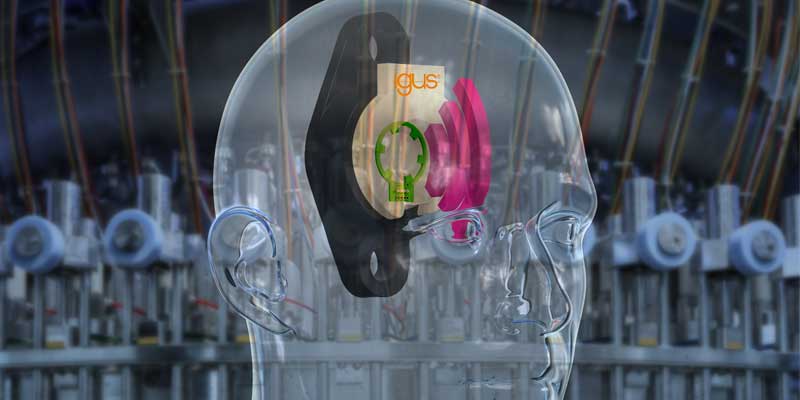Schedule a Call Back
AI with a heart: Why machines need a human touch to make smarter decisions
 Articles
Articles- May 27,25

AI’s journey from theoretical curiosity to transformative force has been marked by remarkable milestones, and yet, its greatest advances are often propelled by a quality no algorithm can replicate: human insight. In Giant Brains, or Machines That Think (1949), Edmund Callis Berkeley foresaw thinking machines that would reshape our world; today, AI indeed permeates industries from healthcare to finance, manufacturing to retail. But as models grow increasingly complex, businesses are discovering that purely data?driven decision?making can falter without human context. This article explores why machines need a “human touch” to make smarter, more ethical, and ultimately more valuable decisions, highlighting key principles, real?world implementations, and a roadmap for embedding human judgment at every stage of the AI lifecycle.
The legacy of human–machine synergy
Berkeley presciently noted that "it is often easier for scientists to create a device than to guide it well afterwards" – a warning that resonates strongly today as AI capabilities accelerate. The scale of today's AI landscape is staggering: we generate approximately 2.5 quintillion bytes of data daily, with the global "datasphere" projected to expand from 33 zettabytes in 2018 to 163 zettabytes by 2025. Model complexity has surged in tandem. In 2019, GPT?2 operated with 1.5?billion parameters; by 2020, GPT?3 leapt to 175?billion parameters, requiring over 350?GB of storage, and setting a new bar for foundation models.
Yet despite this growth, purely data-driven approaches reveal inherent limitations. Bias audits show that up to 38.6% of "facts" in major AI knowledge bases can be skewed without human correction. Research on sentiment analysis reveals that elements like sarcasm and irony can halve a model's accuracy, with automated sentiment detection averaging around 60%, far below human performance on nuanced language tasks.
These numbers underscore a critical reality: even state?of?the?art AI struggles with context. Cultural idioms, evolving slang, and subtle emotional cues often elude purely data?driven systems. As Berkeley anticipated, human ingenuity and calibration remain essential to guide algorithms toward fair, accurate, and context?sensitive decisions, laying the groundwork for the “human-in-the-loop” (HITL) frameworks that define responsible AI today.
Given below are three critical dimensions where human insight elevates AI.
1. Contextual understanding and the “semantic gap”
While AI excels at pattern recognition, it often misses the broader context that humans intuitively grasp. Raw data lacks the nuance of lived experience. A sentiment?analysis tool may flag a sarcastic tweet as positive or misread regional expressions without human validation. In healthcare, AI-powered imaging systems can identify potential abnormalities with impressive accuracy, but radiologists provide crucial interpretation by considering patient history, symptoms, and risk factors before recommending treatment paths.
In more hazardous environments, AI-powered robots are revolutionising fields like firefighting and disaster relief, venturing into situations too dangerous for humans. Advanced lunar rovers equipped with AI capabilities are even conducting complex scientific analyses on the moon's surface. Yet human experts remain essential for interpreting results within broader scientific contexts and making strategic decisions about next steps.
In manufacturing environments, predictive maintenance algorithms flag potential equipment failures based on sensor data, but experienced engineers interpret these alerts within the context of production schedules, supply chain constraints, and safety protocols to determine optimal intervention timing.
2. Ethical oversight and bias mitigation
AI systems trained on historical data inevitably inherit the biases of that data. Human reviewers serve as essential guardrails by auditing decisions, identifying disparate impacts across demographic groups, and adjusting systems to ensure fair outcomes. In finance, AI?driven fraud?detection platforms have cut false positives by 50% and boosted detection rates by 60%, but human investigators remain indispensable for contextual review, balancing efficiency with customer trust.
This human oversight becomes increasingly important as regulatory frameworks evolve. From the EU's AI Act, which mandates human oversight to "prevent or minimise the risks to health, safety or fundamental rights" posed by high-risk AI systems, to China's Next Generation Artificial Intelligence Development Plan, compliance increasingly demands transparent human governance throughout the AI lifecycle.
Perhaps most critically, human oversight addresses the fundamental question of responsibility. As AI applications expand into transportation, healthcare, and other high-stakes domains, the question of accountability becomes central: Who bears responsibility when an AI system causes harm? As legal experts emphasise, AI systems are tools rather than autonomous entities; the responsibility ultimately lies with developers, service providers, and users. This underscores why keeping humans "in the loop" for critical decisions is not merely good practice but an ethical necessity.
3. Creative synthesis and empathetic response
Perhaps the most uniquely human contribution to AI systems is the ability to think laterally, synthesise disparate concepts, and respond with genuine empathy. While generative AI can produce competent marketing copy or customer service responses, human writers infuse content with emotional resonance and brand authenticity.
Etsy's "algotorial curation" exemplifies this blend of algorithmic recommendations with human expertise to create collections that reflect both data patterns and cultural sensibilities. In customer experience applications, AI-powered chatbots efficiently handle routine inquiries, but complex or emotionally charged situations benefit immensely from human engagement, resulting in higher customer satisfaction and resolution rates.
Building effective human-AI partnerships
Organisations seeking to maximise the value of their AI investments should consider these best practices for human-machine collaboration:
- Design for collaboration from the start: Rather than treating human oversight as an afterthought, involve domain experts and end users early in the development process through co-creation workshops and iterative prototyping.
- Prioritise transparency: Implement explainable AI tools that assign value to illustrate each feature's impact on a prediction, enabling human reviewers to validate whether algorithmic reasoning aligns with domain expertise.
- Establish robust governance: Cross-functional oversight teams, including legal, compliance, and diverse stakeholder representation, should guide AI deployments to ensure alignment with organisational values and regulatory requirements.
- Invest in AI literacy: Employees working alongside AI systems need a sufficient understanding of how these tools work, their capabilities, and their limitations to provide meaningful oversight. Corporate programs, such as the ADR Association’s AI literacy initiatives, foster a new problem?solving mindset, teaching employees how models work and where human judgment is critical.
- Build multidisciplinary teams: Blend data scientists, domain experts, psychologists, and UX designers to foster trust, creativity, and high-performing human-AI collaborations.
- Track collaborative performance: Go beyond accuracy, monitor KPIs such as resolution time, user satisfaction, and fairness metrics to evaluate the effectiveness of human–machine synergy.
- Promote a feedback-first culture: Encourage leadership to model openness to human input on AI outputs, enabling a continuous improvement loop where both technology and human judgment evolve together.
Conclusion
AI’s transformative potential is undeniable, yet it remains, at its core, a set of tools. It is indeed clear that even the most intelligent machines still rely on the nuance, ethical compass, and creativity that only humans can provide. By embedding human oversight, fostering transparency, and investing in people alongside technology, organisations can unlock smarter, fairer, and more resilient AI, ensuring that the promise of “thinking machines” fulfils Berkeley’s vision without losing the human touch.
About the author:
Srikumar Kumar is President of GTT Data Solutions Ltd and a noted expert in data governance and master data management. With over 23 years of global experience across India, Singapore, and the UK, he has helped leading firms harness the power of data to drive smarter business decisions.
Related Stories

AI with a heart: Why machines need a human touch to make smarter decisions
As AI models become more complex, their true potential can only be unlocked through human insight, ethics, and creativity—ensuring decisions are context-aware, fair, and empathetic, writes Srikuma..
Read more
Igus fixed flange bearings become intelligent
New generation of igubal spherical bearings is equipped with predictive maintenance system.
Read more
Detecting air leaks using acoustic imaging cameras
An acoustic camera effectively detects air leaks across various industrial settings and provides immediate cost assessments, ensuring a rapid return on investment (RoI).
Read moreRelated Products

Dna of All Information
Roto Leaner Technology Pvt Ltd manufactures a complete range of display solutions.

Standard Series Stations and Enclosures
Esbee
Industrial Combines/Esbee Electrotech LLP offers standard series stations and
enclosures.

Fire Alarm
Safe Zone is prominent traders and suppliers of the industry, offering a wide range of wireless fire alarm.
Read more












